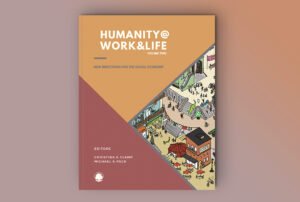September 15, 2016; McClatchyDC
Just last month, the New York Times proclaimed a “remarkable reduction in violence” in Honduras, thanks to increased U.S. funding and involvement in what had been the most dangerous place on Earth. But, newly released U.S. Customs and Border Protection statistics show that while overall apprehension numbers of Central American migrants are down from two years ago, the number of family members being apprehended will almost certainly surpass the total of two years ago, according to McClatchyDC.
“Both family apprehensions and detentions of unaccompanied children have shown dramatic increases over last year’s totals—with family detentions nearly doubling and the number children traveling without parents increasing 52 percent,” Franco Ordonez wrote.
The new report highlights the Obama administration’s continued challenges in responding to the ongoing violence in Central America and the resulting influx of refugees to the U.S.-Mexico border, two years after the humanitarian crisis first made headlines and two months after President Barack Obama announced plans to ease the way for some Central American asylum seekers.
The surge has exacerbated an already long backlog of hundreds of thousands who are awaiting cases in immigration court and put a spotlight on the private, for-profit detention centers that house those seeking asylum.
Although the Department of Homeland Security is working to ensure “that those with legitimate humanitarian claims are afforded the opportunity to seek protection,” many nonprofits, like Refugee and Immigrant Center for Education and Legal Services (RAICES), have questioned the number of women and children who have been detained in three U.S. family detention centers for extended periods of time while their cases are waiting to be heard.
The controversial centers have been the source of multiple allegations of abuse and poor conditions, and RAICES, based in Texas, is fighting to make detention a tool of last resort, according to a statement from Jonathan Ryan, Executive Director.
Sign up for our free newsletters
Subscribe to NPQ's newsletters to have our top stories delivered directly to your inbox.
By signing up, you agree to our privacy policy and terms of use, and to receive messages from NPQ and our partners.
Detention is inappropriate for children. Detention is inappropriate for LGBTQ-identifying individuals. Detention is inappropriate for asylum seekers. Detention is inappropriate as a mechanism to enforce civil immigration violations. DHS should realign its enforcement policies with our nation’s highest values and make the detention of refugees and immigrants a tool of last resort.
The statement came after two dozen women held at a facility in Pennsylvania won national attention in August for launching a hunger strike to protest their families’ long detentions.
The movement to close the detention centers also saw momentum when the editorial board of the New York Times argued that “Prisons Aren’t the Answer on Immigration.”
“The Administration…should be asking itself why it locks up so many immigrants who are not safety threats, who are not there to be punished, who in many cases are refugees and who are the mothers of young children or who are young children,” the editorial said. “There are ways to enforce the law without mistreating a population that fits no definition of a criminal threat.”
However, as the editorial pointed out, there is little time left for President Obama to make the kind of sweeping changes to the American criminal justice system that immigration advocates have called for, and Department of Homeland Security officials have been hitting back on calls to end for-profit detention centers for refugees, according to Reuters: “One DHS official who asked to speak on the condition of anonymity because of the divisive nature of the topic, said ending private detention for migrants would require Congress to spend millions more dollars because government-run operations are more costly.”
With the presidential candidates divided in their views on immigration policy, it’s likely that changes to U.S. strategy will be on the back burner until a new administration takes over next year, leaving thousands of migrant families continuing to wait.—Anna Berry











